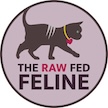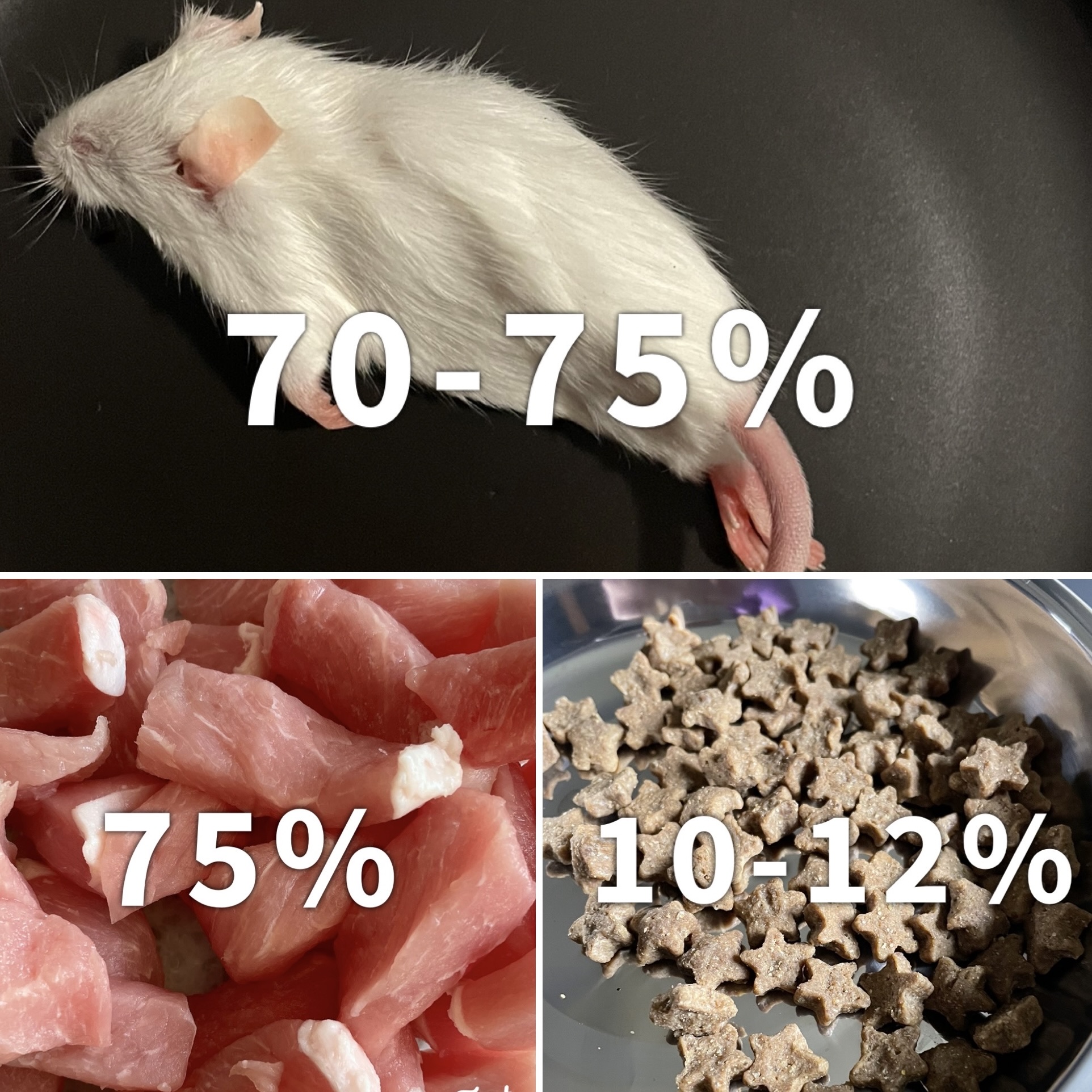One of the most overlooked, yet critical, aspects of a cat’s diet is moisture. Our pet cats descend from desert dwelling felines. They do not have a strong thirst drive nor are they very efficient drinkers. They need to get their moisture needs met from their food—to “eat their water,” not drink it. In fact, research shows that they literally cannot meet their water needs by drinking. This makes complete sense as a desert dwelling animal since water is hard to come by in the desert.
Cats need to eat moisture rich food
A cat’s body is created to digest small prey animals. Whole prey typically contain approximately 70-75% water. In contrast, dry food has only 10-12% moisture! Cats’ saliva, stomach acid, length of intestines, and other internal organs have specific form and functions for digesting meat, fat, and very minimal carbs that contain a high level of moisture. It wrecks havoc on their bodies when a cat eats overly processed, carb heavy, moisture depleted food.
We all know cats that have lived for years eating nothing but dry foods. That’s about having hearty genes—that doesn’t mean dry food is good. I am willing to bet that those cats that ate dry food (my childhood cats included) were not thriving. I suspect that things that are considered “normal” for cats: lots of shedding, chronic hairballs, frequent regurgitation of food, low energy, inappropriate urination, extra weight, etc., were present.
Consequently, cats have an unfair reputation for being lazy, sleeping all day, & being low maintenance. Those behaviors are indicative of a cat that doesn’t feel well, not a reflection of their true nature. In truth, cats are amazing athletes. They stalk, hunt, pounce, leap, and run with grace and ease. But like any athlete, they need energy and to feel well to do those things.
Since cats are both predators and prey, they are masters at hiding when they don’t feel well. A sickly animal is easy pickings for predators. Just because a cat eating moisture depleted food doesn’t “look sick,” doesn’t mean that their bodies aren’t working hard to deal with eating such biologically inappropriate food.
What happens without the needed moisture
Let’s look at some of what is happening inside a cat’s body when fed a diet that lacks the moisture needed:
-Mouth/teeth: the carbs in dry food interfere with the ph of the saliva, increased bacteria & plaque occur, poor oral health leads to other health issues, including kidney disease
-Stomach: the ph of the stomach is altered by the carb heavy food; bloating from grains can occur; many nutrients aren’t present in useable forms
-Pancreas: insulin production goes haywire trying to deal with the sugar in carbs
-Adrenal gland: in response to the pancreas being overworked, the adrenal gland tries to compensate and is now overworked; cortisol, the stress hormone, is released and floods the system
-Kidneys: there is not enough moisture for the kidneys to function properly; they are taxed & overstressed from lack of water
-Urinary tract: there is not enough water to keep the system flushed, crystals can’t be naturally eliminated and therefore build up; inflammation of the bladder; elimination issues
-Intestines: way too much indigestible plant matter for the intestines to process; increase in volume and frequency of bowel movements; constipation, diarrhea, inflammation, discomfort
-Excess weight: humans have a far greater range of healthy weight than small cats—1 excess pound of weight on a 10 lb cat is a big deal for their health and well being
-Emotions: when cats can’t engage in natural cat behaviors, this is highly stressful for them. If they are too lethargic to run around, jump up on things, and play—they can feel vulnerable and stressed. Cats experience stress if they can’t run and escape. Remember, cats are also prey. Living in a state of stress contributes to a weakened immune system and increased vulnerability to disease/illness.
So you see, while a cat may look “fine” eating moisture depleted food—nothing about what is happening inside their bodies is actually fine at all.
We can do better
Fortunately, we can use this knowledge to inform what we feed our cats. “When we know better, we can do better.” Feeding a raw food diet is a fantastic way to provide the necessary moisture from the food itself. Fresh meat has approximately 75% water, which easily and naturally provides our cats with the moisture needed from their food.
Many raw fed felines do not drink from water dishes at all. They are getting their moisture needs met through their raw food diet. While they have less frequent bowel movements on a raw food diet, you will find larger urine clumps in the litter box. This is the case even without them drinking from a fountain or dish. It’s still important to have a water source available for your cat, although you may find, like I do, that it serves as a dust collector!
The bottom line—cats absolutely require a moisture rich diet to thrive and be healthy. Dry food never should have been invented for cats at all. It is the most inappropriate form of food for our little carnivores. Sadly, it is also the most convenient and cheapest for people to feed.
Feeding a raw food diet naturally provides cats with the moisture needed as well as the appropriate amounts of bioavailable protein, fats, and carbohydrates. Feeding cats does not need to be hard or complicated. However, it does require understanding the absolute importance of feeding a moisture rich diet.
Sources
Becker, K. & Taylor, B. (2018). Dr. Becker’s Real Food for Healthy Dogs & Cats: Home-Made Raw Feeding. Natural Pet Productions.
Curtis, L. (2011). Feline Nutrition: Nutrition for the Optimum Health and Longevity of your Cat.


